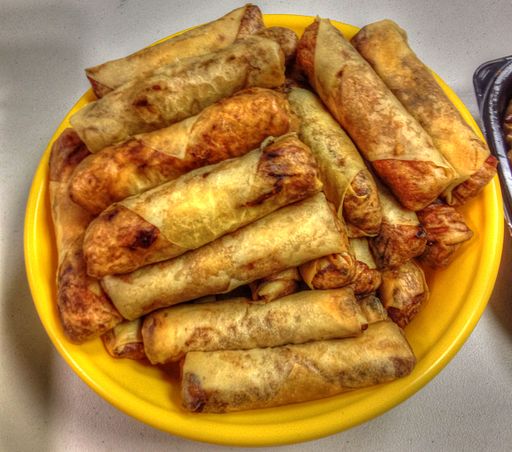A Story in Egg Rolls
“What you want to cook and eat is an accumulation, a function of your experiences — the people you’ve dated, what you’ve learned, where you’ve gone. There may be inbound elements from other cultures, but you’ll always eat things that mean something to you.” – Jennifer 8. Lee, quoted in “What Americans can learn from other food cultures” by Amy S. Choi
Food is a gateway to culture, and the Fox Cities allows you to take a slice of the world without having to travel more than 10 miles. While you only get small bites, the variety of food allows all of us to widen our experiences. In this blog series, I will focus on the Southeast Asian communities in the Fox Cities, especially the Hmong.
In the story of the city of Appleton, the arrival of the Hmong is a relatively recent chapter. Originally, the Hmong are from the highlands of Laos, a country near Cambodia and Vietnam. During the Vietnam War and the Laotian Civil War, the Hmong allied with the United States, fighting a “secret war” on behalf of the American government against the Viet Cong and the communist Pathet Lao faction. When Laos and Vietnam became communist countries in 1975, both their governments started targeting Hmong people. Many of the Hmong had to flee to refugee camps in Thailand.
Eventually, nonprofit organizations and other groups started sponsoring Hmong immigration to the United States. Many of these groups were based in Minnesota and Wisconsin. As a result, these two states have the second- and third-largest group of Hmong people in the country; Wisconsin alone has nearly 50,000 first- and second-generation Hmong Americans. According to a University of Wisconsin study, nearly 5,000 Hmong Americans call the Fox Cities home, working and establishing cultural organizations, churches and businesses.
So what does this all have to do with food? One of the many ways Hmong Americans have contributed to the area’s cultural landscape is by sharing their food traditions with the rest of us. The most iconic item they’ve given us is the Hmong egg roll, which contains meat, vegetables, bean thread noodles, and many different ways to combine the three. With a wide variety of ingredients and levels of spiciness, the egg rolls’ hearty flavors often bring people back for seconds and thirds.
Fortunately, there’s plenty of nearby places to find a delicious Hmong egg roll, and I visited a number of them over a couple weeks. The owners and entrepreneurs whom I interviewed have all shared a piece of their heritage with the community, and they all chose different ways to accomplish that goal. As I write about each restaurant, I hope not only to tell the story of the egg rolls, but of the people who made them.











Leave a Comment